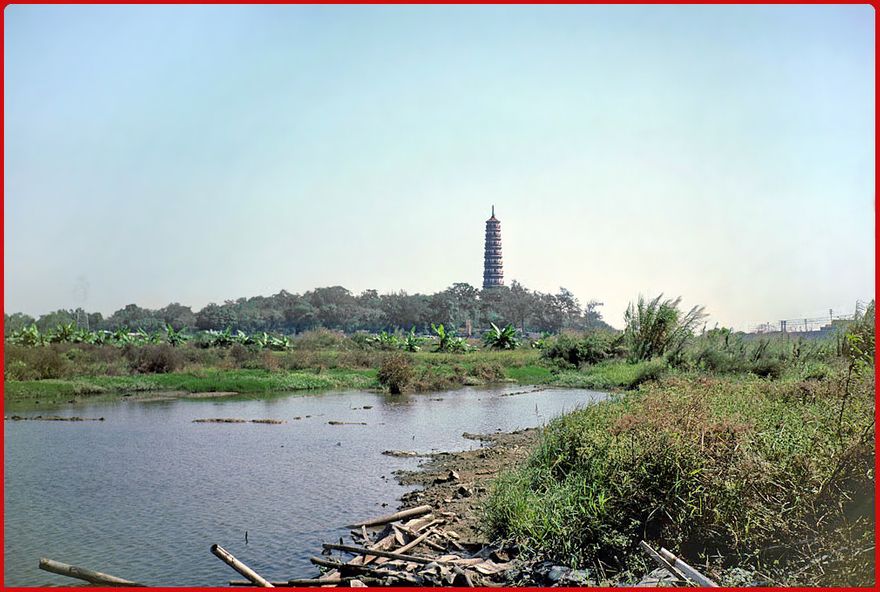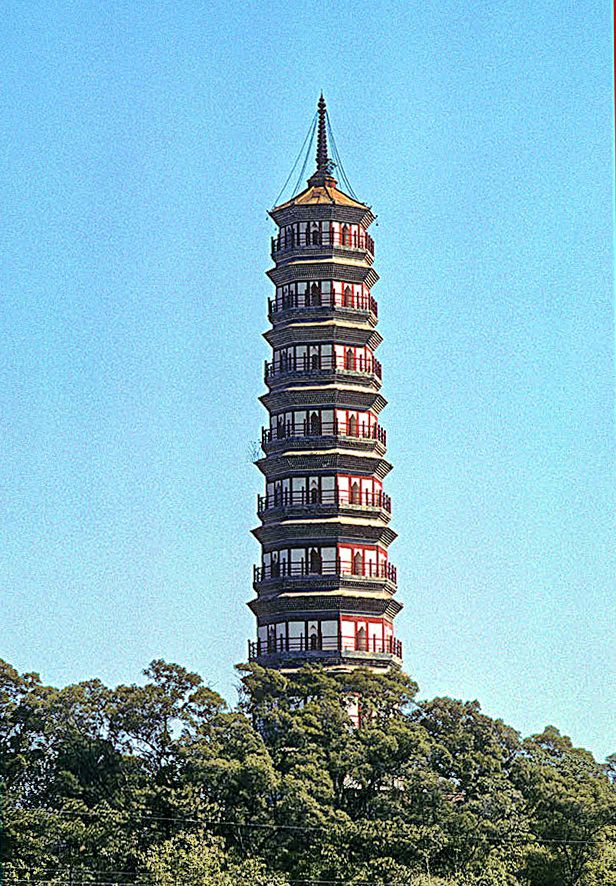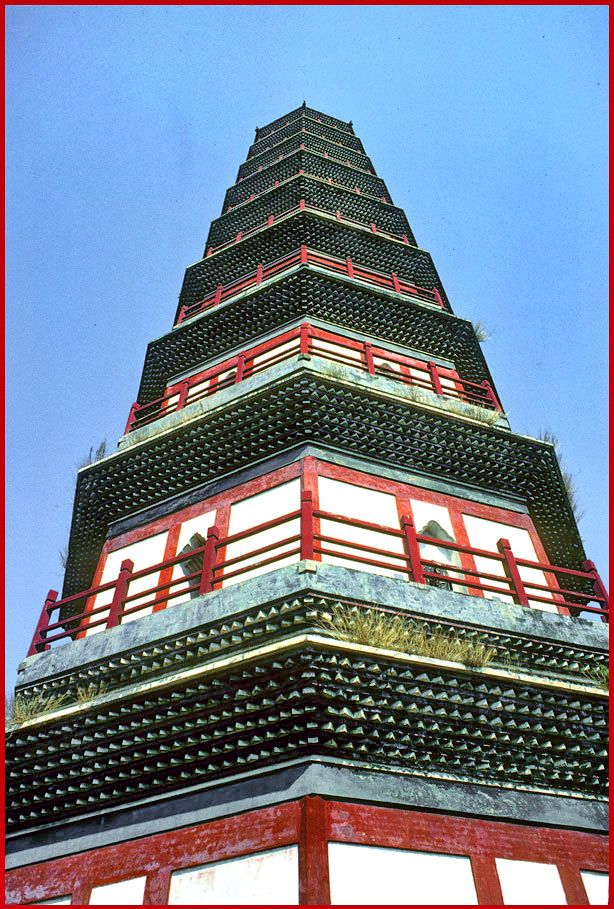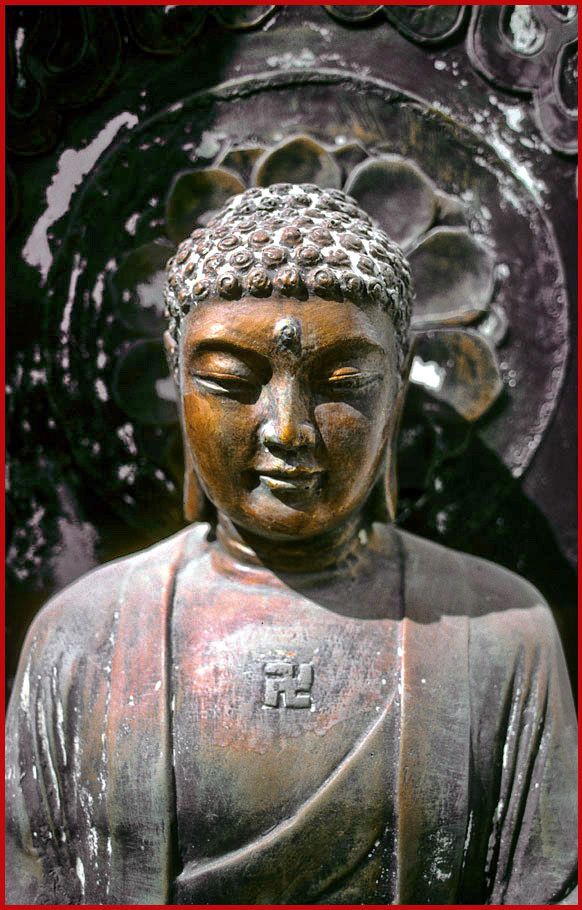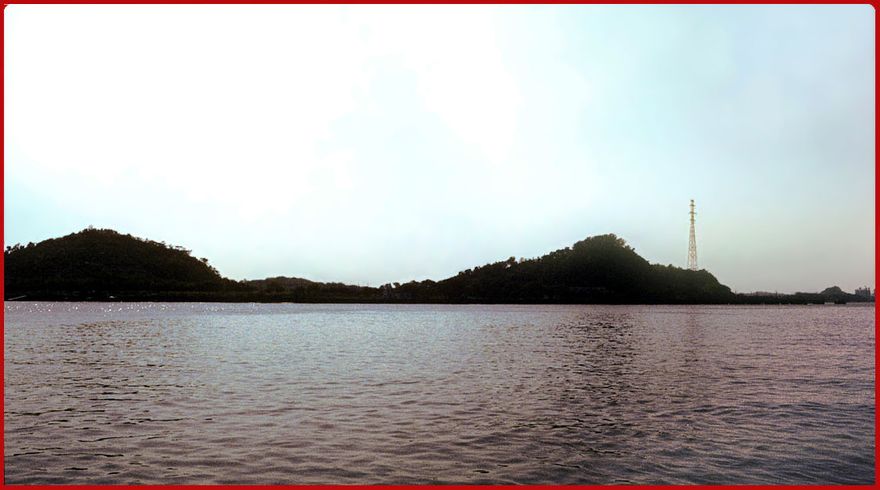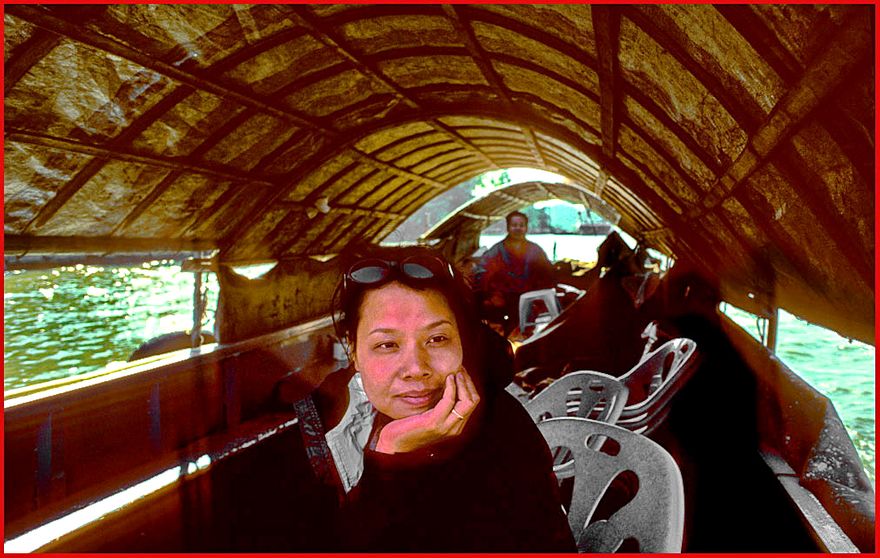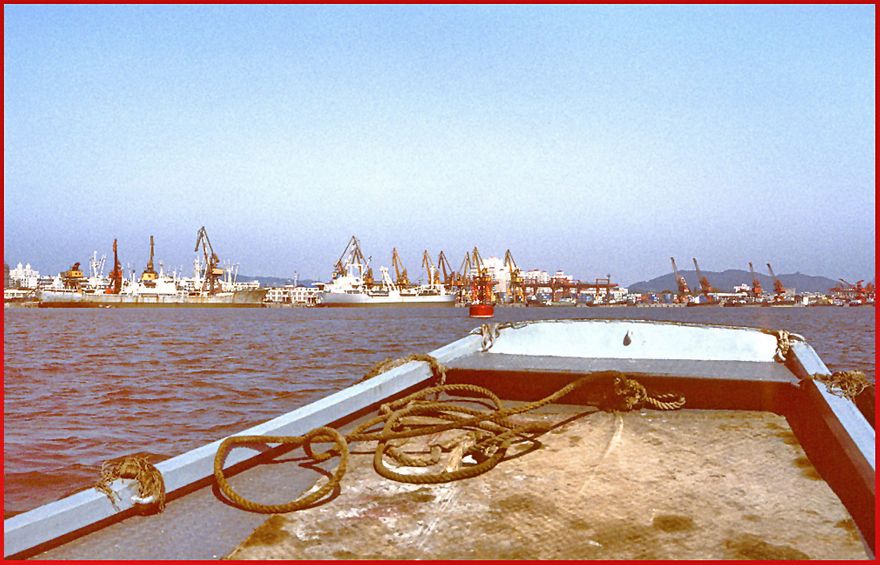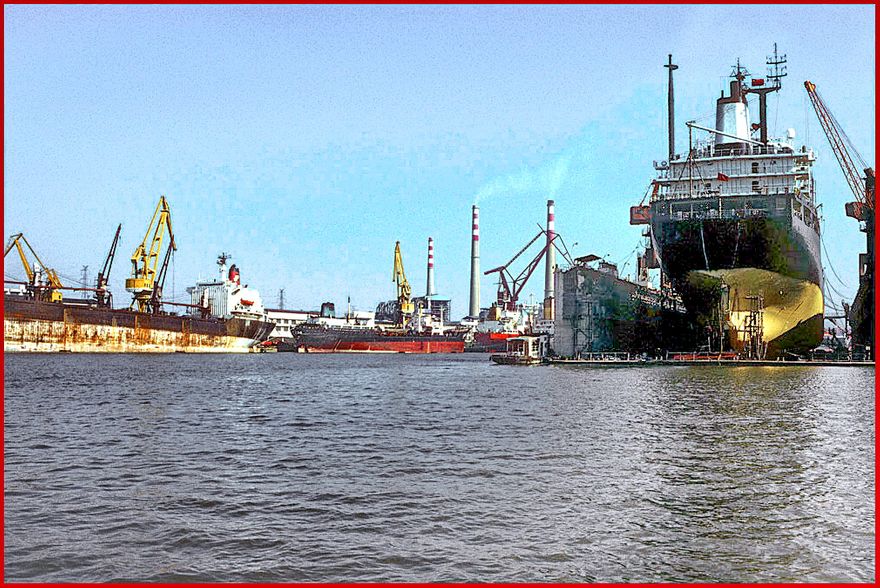The Whampoa Pagoda
Over the years I have been navigating the Pearl River in almost any imaginable type of boat, like ferry from Hong Kong, fast outboard powered small open boats, - local ferries between the Pearl River islands, - local ferries from mainland to Pearl River islands, - local water taxies and , - of course -, big modern merchant ships.
But regardless of how I navigate this river, - and what type of craft I use -, the sense of history is immense.
It hits you like a hammer - - - -
It seems as if the big modern merchant ships of all types, the small local ships and the fishing boats suddenly disappear in the mist, and by some sort of magic they are suddenly replaced by the great trade frigates of the 18 hundreds, - the super fast opium clippers, and the just as fast, sleek tea clippers and lots of Chinese junks with coloured hulls and sails - - - -
It's strange and fantastic - but this feeling comes every time - - - Apparently it is unavoidable - - -
When passing the "Solitary Nail" I really see the fleet of opium clippers around the island, and when passing the fortifications at the "Tigers Mouth", - Bocca Tigris -, I can actually hear the noise of gun shots and feel the canon balls fly over my head - - - -
But only the pagodas I see on the way up are not fantasy or imagination,- they are still there, - very real -, just as they were real and important land marks for the early Western sailors and traders, that hundreds of years before me struggled their way up this river in their sail powered ships- - -
The three famous pagodas, Linhua, Pazhou and Chigang were actually referred to as "the three masts of Guangzhou", because the sailors used them as important navigation points.
In these web pages about the search for the lost graves on Danes Island, I have often referred to the Whampoa pagoda,- and shown it on paintings and photographs -, and since this pagoda was the most important landmark I looked for during my search, I will just go a little closer to this magnificent, old tower - - -
The real name of the Whampoa Pagoda is actually Pazhou, named after the village of the same name. It is also referred to as Haiao pagoda, - the Turtle Tower -, because the legend says that a giant turtle was often observed in this area of the Pearl River.
Construction of this almost 50 meter high pagoda began in 1597, and it was completed in year 1600. Now it is beautifully restored and is an important, protected cultural relic, - luckily enough way out of the tourist trail, so if you are into maritime history, it is a very good idea to pay a visit to the famous Whampoa Pagoda - - -
Please enjoy some more of my many images from a visit to this wonderful pagoda and historical landmark - - -
And at the same time this page means leaving Danes Island, although the Pazhou Pagoda actually were the first attraction Kit Yu and I visited on our way to Danes Island - - -
2003-10-068 - The Whampoa Pagoda (Pazhou Pagoda) The more than 400 years old Pazhou pagoda on Whampoa Island in the Pearl River delta - (Photo- and copyright: Karsten Petersen)
To get to the Wampoa - (Pazhou) - pagoda is now quite easy - - -
A new subway line connected the island with big city Guangzhou, - and Kit Yu got us onboard such a train - - -
At a stop on Whampoa Island we decided to get of the train, because we thought that this MUST be near the pagoda - -
And quite rightly so - - - We could see the pagoda sticking up over the island, - and we decided to walk to the pagoda - - -
2003-10-072 - The Pazhou pagoda on Whampoa Island On the way visiting the pagoda, - a well known land mark and fix point for the first European navigators - (Photo- and copyright: Karsten Petersen)
2003-10-077 - The Whampoa Pagoda (Pazhou Pagoda) Looking up all nine levels, - almost 50 meters to the top - (Photo- and copyright: Karsten Petersen)
2003-10-081 - The Whampoa Pagoda (Pazhou Pagoda) - one of the many Buddha statues that decorates the pagoda - (Photo- and copyright: Karsten Petersen)
2003-10-083 - The Whampoa Pagoda (Pazhou Pagoda) The base has some wonderful statues of giants that apparently carry the pagoda. Take note of the obvious Western look of this one! He is for sure NOT a Chinese - - (Photo- and copyright: Karsten Petersen)
After our exploration of the Whampos - (Pazhou) - pagoda, we continued by bus to the ferry for Danes island - - -
See previous 3 pages - - -
With mission accomplished on Danes Island, it was again time to leave Danes Island, with it's history and ghosts from the past, - and pictures from our departure come here - - -
2003-11-021 - Leaving Danes Island, - a last look back - The grave site is on the hill to the left of the antenna mast - (Photo- and copyright: Karsten Petersen)
2003-11-022 - Kit Yu and I Leaving the island by a local water taxi, - destination Whampoa. At Whampoa I had to check out some more interesting historical stuff, - this time Chinese history. But that is another story - (Photo- and copyright: Karsten Petersen)
2003-11-026 - The Pearl River - towards Whampoa with its endless wharfs - (Photo- and copyright: Karsten Petersen)
2003-11-027 - crossing the mighty Pearl River between Danes Island and Whampoa - (Photo- and copyright: Karsten Petersen)
2003-11-035 - along the modern Whampoa wharfs and ship repair docks - and the end to my Danes Island adventure - (Photo- and copyright: Karsten Petersen)
Finally:
The answers to my questions in the beginning of this page:
Question No. 1: Danes Island??? Did Denmark posses a colony in China???
Answer: No! The name Danes Island came from the fact, that the coast of this particular island was mainly used as anchorage for the Danish ships, - hence the name Danes Island.
The same goes for French Island! This is where the French ships dropped their anchor - and likewise for the British ships! The Mandarin in charge of the foreign ships organized everything very well, - and if any problems the Chinese know exactly where to find a certain ship - - -
Question No. 2: What did all those Western ships do there at this place, - in the middle of nothing -, far from the big city Canton???
Answer: They discharged and loaded cargo into smaller cargo junks, which then brought the cargo to and from Shamian Island at Canton, where the actual trade took place. This is because the western ships were forbidden go further up the river. Reason was, that the Chinese authorities were afraid to expose the local Chinese population to the bad influence they might get from thousands of "primitive" and "barbarian" Western sailors - - -
They had a point there, but another reason made more sense: Some Western ships were simply too big to go all the way up to Shamian Island, so even if they were allowed to go all the way up, they could not due to draft restrictions in the river - - -
The other questions: What was Danes Island? - and what does it look like today?? - are fully answered in these web pages. Please enjoy - - - :-)
Finally: How come the Western tombs on Danes Island still exist, - and is very well maintained by the Chinese authorities????
Well, - Kit Yu and I have explored another historical, Western grave sites - one completely covered by concrete as foundation for a huge communication mast! And as you might know, - even Kung Fu-Tse's tombstome was smashed to pieces by the communists when they conquered China - - -
But not the tombs on Danes Island?
The reason is simply that the first US ambassador to China are buried there, - and therefore the US Government requested that this special cemetary was spared, - and the Chinese Government accommodated this wish - - -
When the site was going to be wrecked because the site was going to be used for a shipyard, the Chinese government therefore moved all the tombs to the new location, - the one I searched for - and found - - -
The next chapters in this section on China:
1) A Tang dynasty bridge -
2) The "Wind and Rain Bridge" -
3) The valley of the Dong people -
4) Ping-an - the "Dragon's backbone" -
5) Li River
What comes first of the above items, I have not yet decided , but now you know what you can expect - - -
